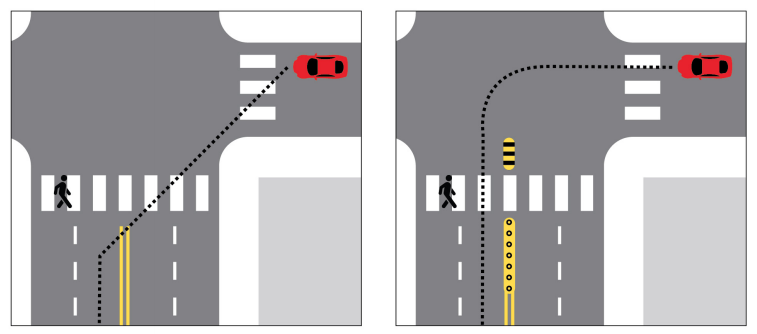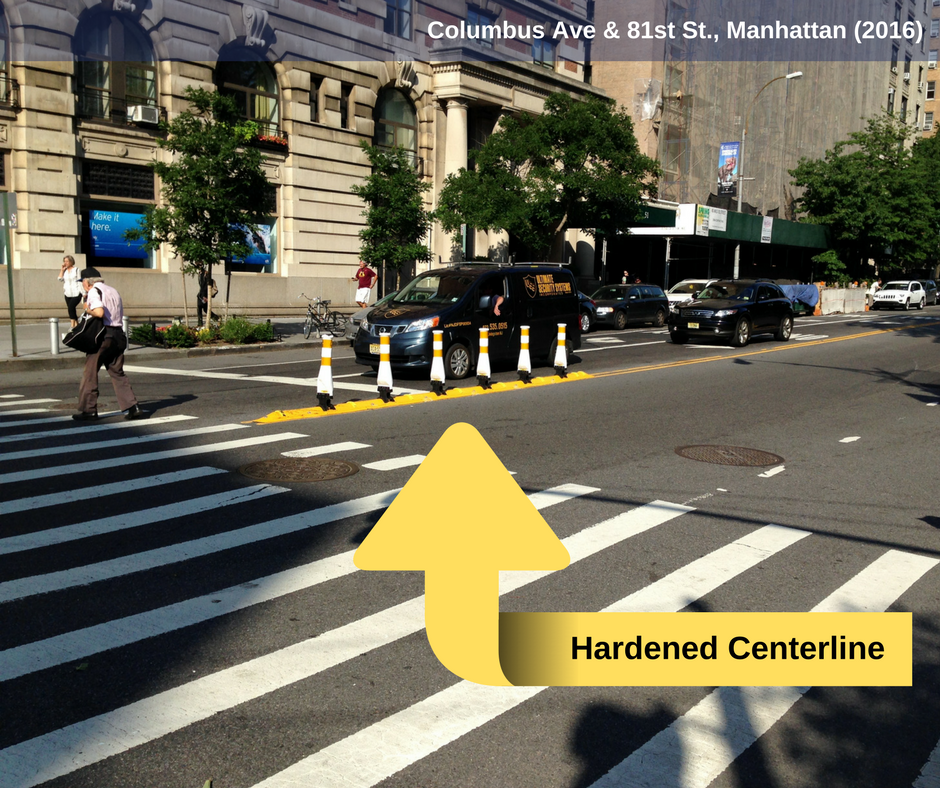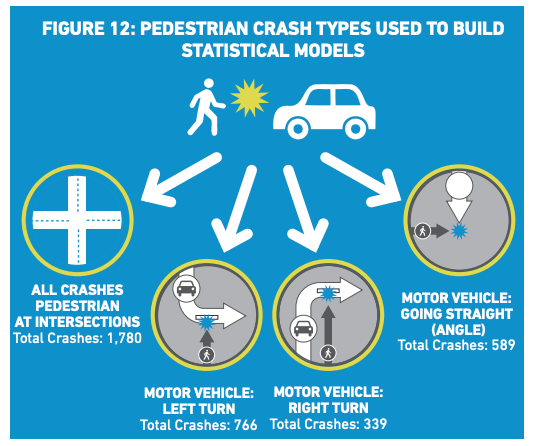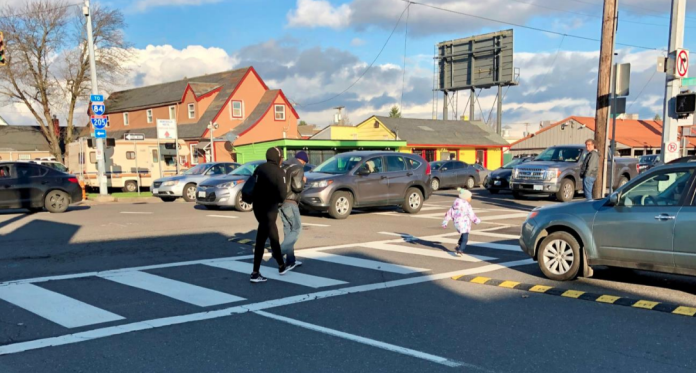
The Seattle Department of Transportation (SDOT) has announced plans to implement a new kind of pedestrian improvement that other cities have begun to add to crosswalks to reduce the frequency and severity of collisions between people walking and rolling and people turning left in vehicles. The improvement, which is referred to as a “hardened centerline” treatment, discourages people driving who are turning left from crossing the line between the travel lane and the opposite oncoming lane, including where the line is invisible in the crosswalk itself. This has the effect of squaring turns, slowing speeds and preventing people using the crosswalk from being cut off by an impatient driver.
The announcement that these are getting added to the tools in Seattle’s pedestrian safety toolbox was made to the Pedestrian Advisory Board at their meeting last night.
This treatment has not been systematically applied in Seattle, with only a few specific applications over the past decade. New York City, Washington, D.C. (where our current DOT Director was last employed), and Portland, Oregon are being cited having great success in implementing these treatments.
Last year, Portland released the results of a pilot program intended to calm left-turning traffic. The hardened centerline treatment was installed at 42 intersections across the city. The result? “Left turn calming consistently reduces turning speeds by modest but potentially significant amounts (median speed reduction of 13 percent, from an average median speed of 14.0 to 12.1 mph, across all locations with hardened centerlines),” according to the report. Not all of the Portland intersection treatments included what’s referred to as a “nose,” where the centerline extends past the crosswalk into the intersection. Perhaps not surprisingly, the intersections with these were more effective. “Hardened centerlines that include a ‘nose’ that extends into the intersection are approximately 50 percent more effective at slowing speeds relative to centerlines without a nose (median speed reductions of 16 percent with noses compared to 10 percent without noses).”
New York City’s rollout has included 302 intersections since 2016, with average left turn speeds decreasing by 52.6% at those intersections. New York City’s transportation department (NYCDOT) also says pedestrian injuries have decreased by 20% at intersections that have received the left-turn calming treatment.
Seattle’s rollout will start later this year or early next year, with four intersections on Rainier Avenue: Massachusetts, Andover, Hudson, and Graham Streets. Two to three months after that, treatments will be applied to more intersections along Rainier Avenue before SDOT moves on to utilizing them in other neighborhoods like Downtown and the University District.
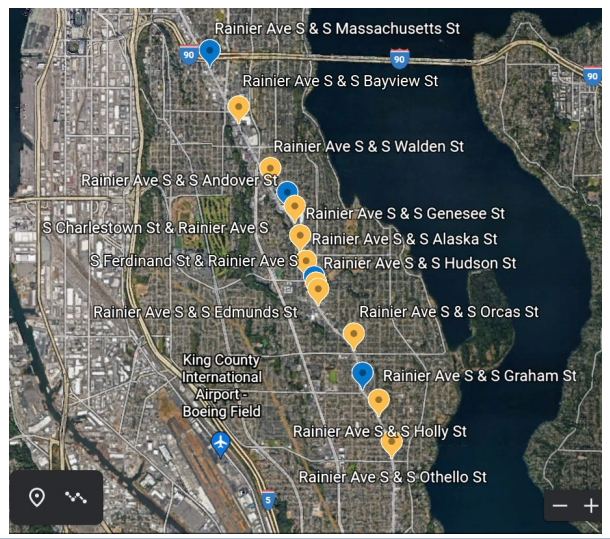
SDOT’s Kadie Bell Sata was sure to note for the Pedestrian Advisory Board that this is not being considered a “pilot” in Seattle like it was in Portland. The data from those other cities is being used as the basis for rolling out what has been shown to be an effective treatment that can be implemented in a high-impact area like Rainier Avenue.
An SDOT analysis of hundreds of pedestrian-involved collisions showed that left-turning vehicles were involved in 43% of the collisions, by far the most frequent type of crash. SDOT data showed that streets with higher speed limits tend to have more left-turn collisions and that simply the existence of a left turn lane reduced the risk of a left-turn collision involving a pedestrian.
Hardened centerline treatments are not being considered at all intersections: spots where transit vehicles make frequent turns, intersections where freight routes intersect, and where protected bike lanes interact with other streets are not being considered for this type of treatment.
Hardened centerline treatments aren’t a substitute for comprehensive traffic calming, of course, but should prove a valuable addition to the pedestrian safety toolbox at SDOT and the news of this rollout is very welcome.
Ryan Packer has been writing for The Urbanist since 2015, and currently reports full-time as Contributing Editor. Their beats are transportation, land use, public space, traffic safety, and obscure community meetings. Packer has also reported for other regional outlets including BikePortland, Seattle Met, and PubliCola. They live in the Capitol Hill neighborhood of Seattle.

